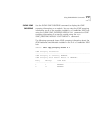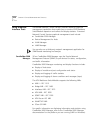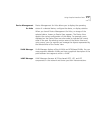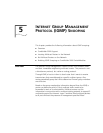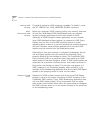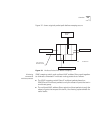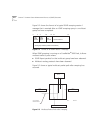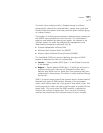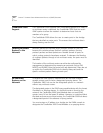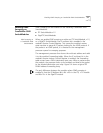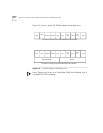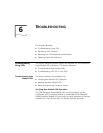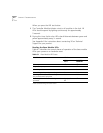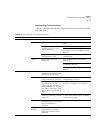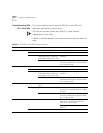
Overview
5-5
The result is that multicast traffic is flooded through a multicast
group-specific subset of the switched fabric, namely that subset that
contains either end stations that have joined the given multicast group,
or multicast routers.
The location of multicast group members is determined by snooping on
the IGMP/IP report packets sent from the hosts. This information is
aged out and refreshed by hearing new reports. the location of the
multicast routers can either be configured by management or be
determined by snooping on protocols such as:
■
Protocol-Independent Multicast (PIM)
■
Multicast Open Shortest Path First (MOSPF)
■
Distance Vector Multicast Routing Protocol (DVMRP)
The CoreBuilder 5000 hub uses the following two types of IGMP
packets to determine the flow of multicast data:
■
Queries
— Query packets (IGMP Type = 1) are flooded to all ports
in the vbridge.
■
Reports
— Report packets (IGMP Type = 2 and 6) are only sent to
multicast router ports. They are not forwarded to other ports
because they inhibit hosts on those ports from reporting their own
membership in those groups. This results in overly restrictive filtering
by the hub.
IGMP is a host-to-router protocol that assumes there is shared medium
between both types of IGMP packets. Because of this assumption,
when a host hears a report for a host group IP that wants to join, that
host assumes that it does not need to send a report to receive this host
group traffic. This occurs when the IGMP protocol is optimized to
minimize the number of reports sent. This is not true for filtering
switches that interconnect the multicast routers to hosts, however.



